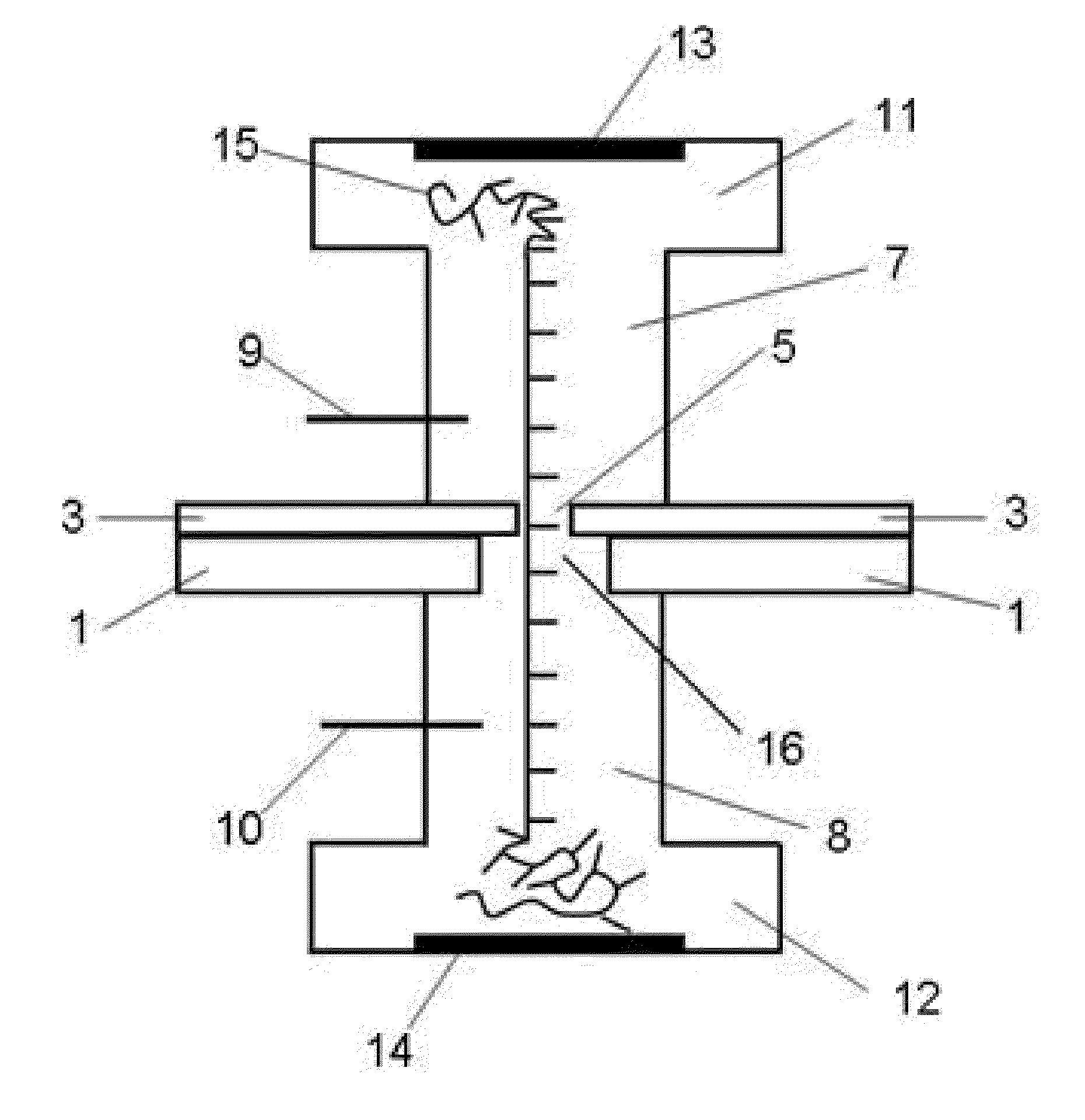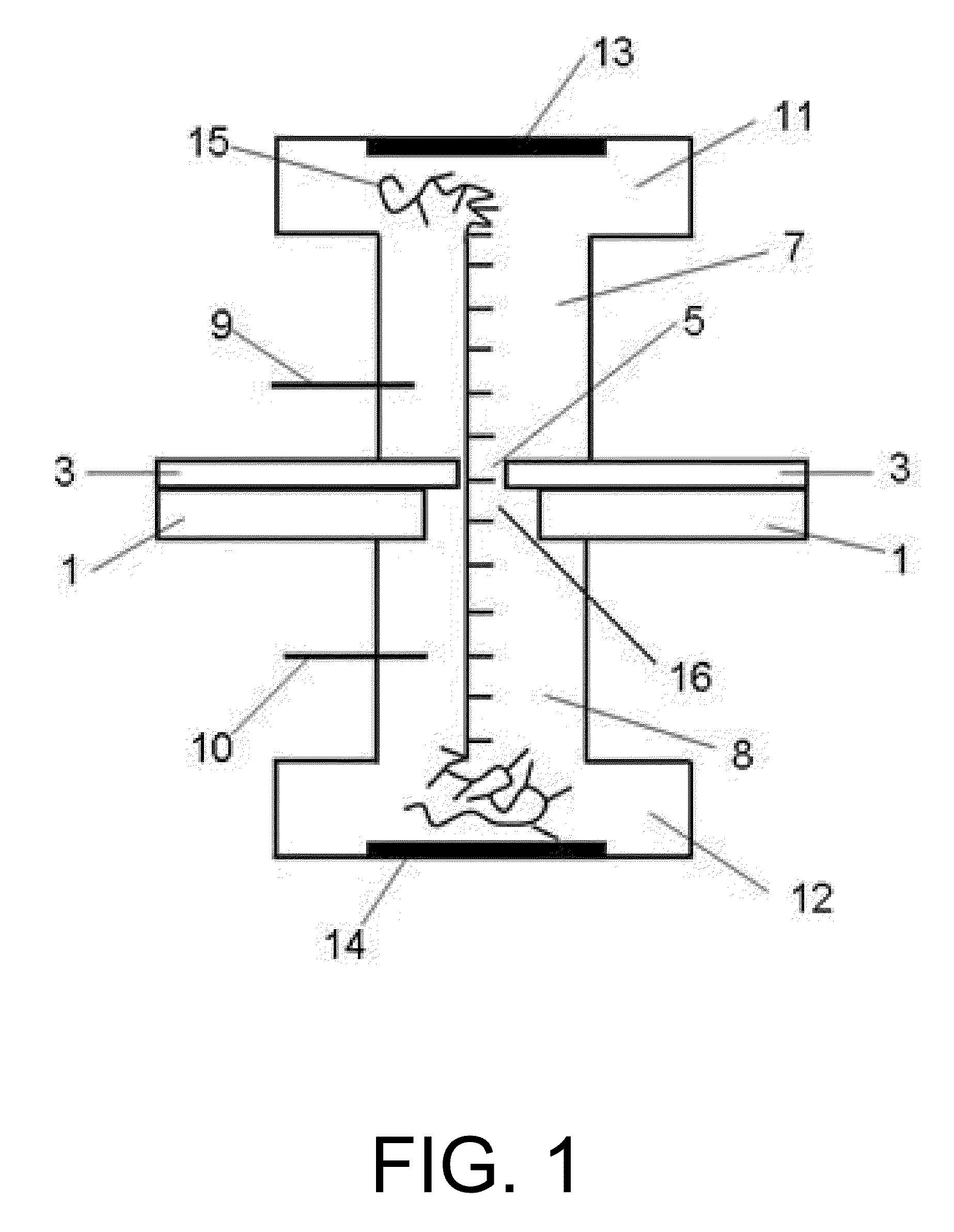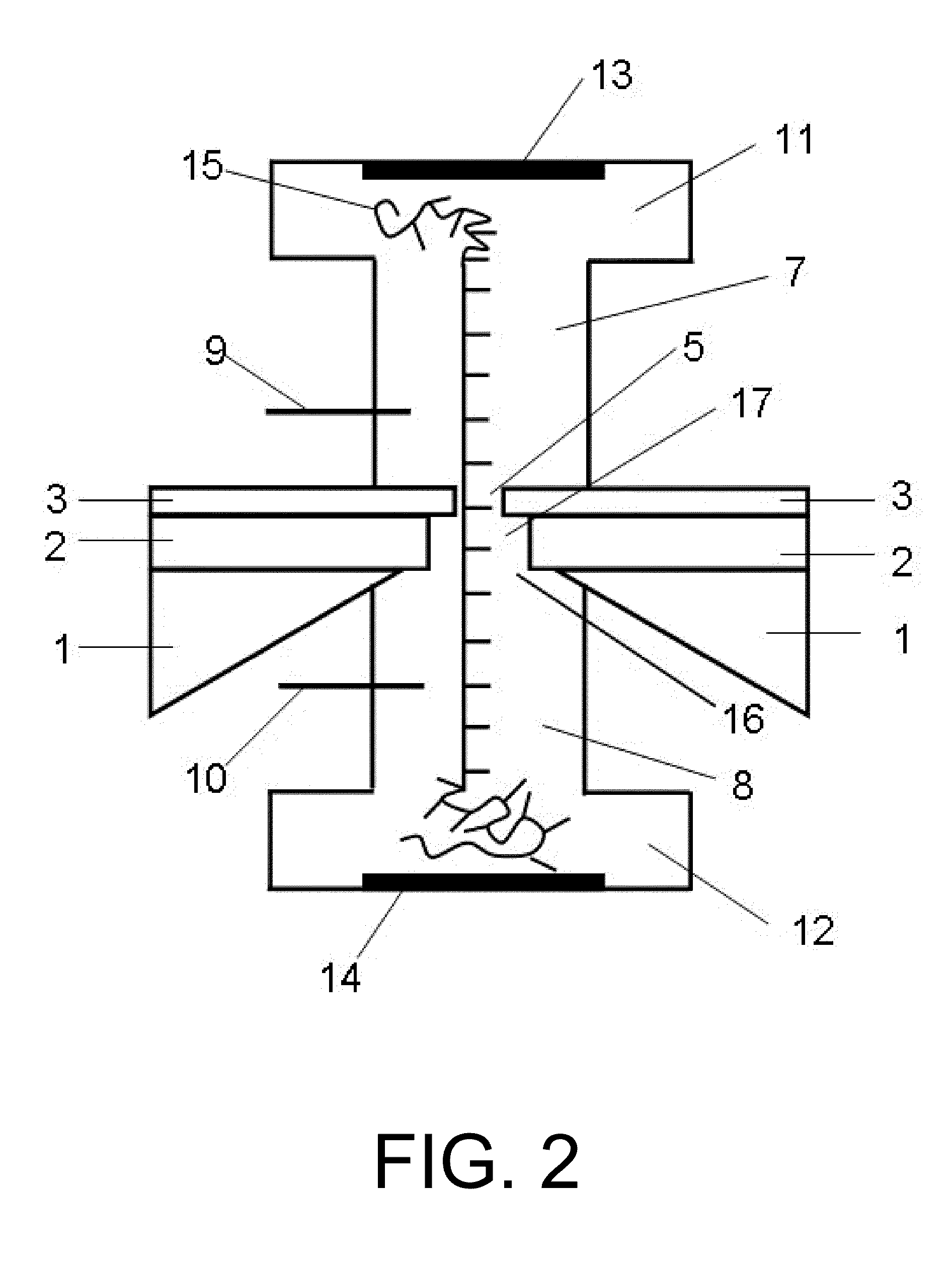Nanopore Sensor Comprising A Sub-Nanometer-Thick Layer
- Summary
- Abstract
- Description
- Claims
- Application Information
AI Technical Summary
Benefits of technology
Problems solved by technology
Method used
Image
Examples
embodiment 1
d Transfer of boron nitride (h-BN) Membrane
[0058]Synthesis of boron nitride membrane on Cu foil by chemical vapor deposition (CVD): after cleaning and polishing a 25 μm-thick Cu foil, the resulting Cu foil was put into an ultrahigh vacuum chamber (1×10−8 torr) and thermally treated at 750° C. under an Ar / H2 (˜20 vol % H2) atmosphere for approximately 120 min. The temperature was increased to 950° C., and the Cu foil was treated at this temperature for another 30 min. After the thermal treatment, the Ar / H2 flow was stopped and a mixed gas of B3N3H6 and N2 was fed into the chamber for 20 min to afford a monolayer h-BN (FIG. 5).
[0059]After forming the monolayer h-BN, a 500 nm-thick polymethylmethacrylate (PMMA) layer was spin-coated on the h-BN surface. The Cu was then etched away by putting the PMMA-coated h-BN membrane / Cu stack into a ferric nitrate solution. The Cu substrate was separated from the PMMA / h-BN membrane stack to afford a PMMA / h-BN membrane stack. The PMMA / h-BN membrane ...
embodiment 2
of Nanopore in h-BN Membrane
[0060]Referring to the fabrication steps shown in FIG. 6, insulating layer comprising a 30 nm-thick Si3N4 layer is disposed on a 50 nm-thick SiO2 layer on a 600 μm-thick single crystal Si substrate. The Si3N4 was used as the first insulating layer 2, and the SiO2 / Si was used as the substrate 1 (FIG. 6a).
[0061]Using photolithography and lift-off techniques, a circular-shaped opening 16 having a diameter of 80 μm was formed by etching through the SiO2 / Si substrate was done by using a KOH solution to etch patterned region of the Si layer and using a HF buffer solution to etch patterned region of the SiO2 layer, (FIG. 6b).
[0062]Using electron beam lithography and SF6 plasma reactive ion etching techniques, a square-shaped opening 17 (2 μm×2 μm) extending through the Si3N4 layer was formed in the laminated insulating layer (FIG. 6c).
[0063]The synthesized monolayer h-BN was transferred onto the Si3N4 layer as the sub-nanometer-thick functional layer. The h-BN ...
embodiment 3
d Transfer of Graphene Membrane
[0067]The graphene was prepared by CVD method: a 100 nm-thick Ni catalyst layer was first formed on a SiO2(300 nm) / Si substrate. The resulting Ni / SiO2 / Si stack was put into an ultrahigh vacuum chamber (1×10−5 torr), and then thermally treated at 1,000° C. under H2 (1×10−5 torr) atmosphere for approximately 25 min. The temperature was then decreased to 850° C., and a CH4 gas was fed (100 sccm) into the chamber for 10 min. After that, the temperature was decreased to room temperature at a cooling rate of 20° C. / m i n to afford a graphene membrane with a thickness of approximately 3.35 nm (i.e., 10-layer graphene) on the Ni surface.
[0068]Transfer graphene membrane: a 500 nm-thick PMMA was spin-coated on the surface of the synthesized graphene membrane. The PMMA-coated graphene / Ni / SiO2 / Si stack was then put into a ferric nitrate solution to etch the Ni layer away so as to separate the PMMA / graphene stack from the SiO2 / Si substrate, thus obtaining a PMMA / gr...
PUM
| Property | Measurement | Unit |
|---|---|---|
| Nanoscale particle size | aaaaa | aaaaa |
| Nanoscale particle size | aaaaa | aaaaa |
| Nanoscale particle size | aaaaa | aaaaa |
Abstract
Description
Claims
Application Information
 Login to View More
Login to View More - R&D
- Intellectual Property
- Life Sciences
- Materials
- Tech Scout
- Unparalleled Data Quality
- Higher Quality Content
- 60% Fewer Hallucinations
Browse by: Latest US Patents, China's latest patents, Technical Efficacy Thesaurus, Application Domain, Technology Topic, Popular Technical Reports.
© 2025 PatSnap. All rights reserved.Legal|Privacy policy|Modern Slavery Act Transparency Statement|Sitemap|About US| Contact US: help@patsnap.com



